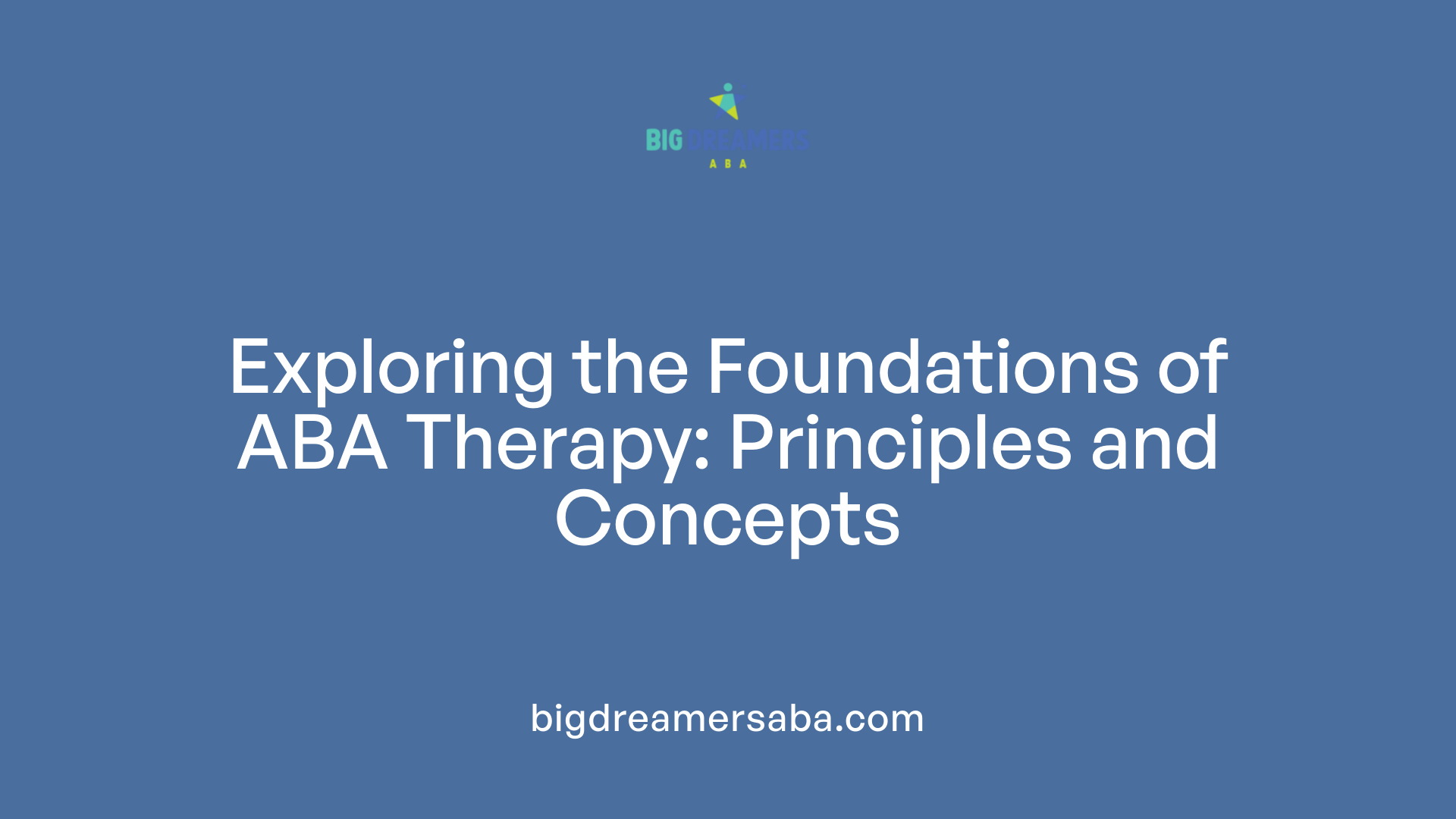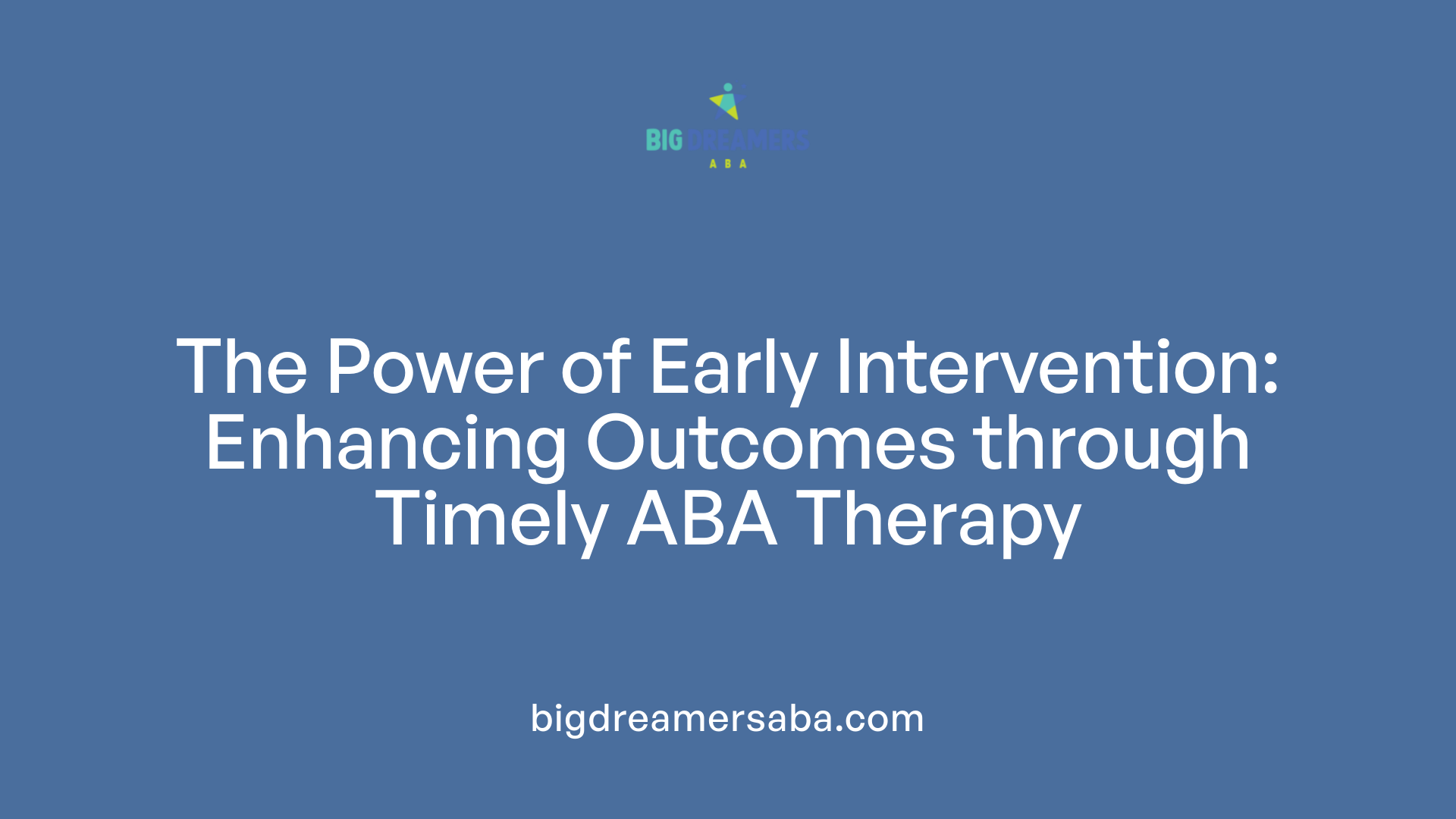How ABA Therapy Helps Children with Autism
Unlocking Potential with ABA Therapy for Autism

Introduction to ABA Therapy
Applied Behavior Analysis (ABA) therapy has emerged as one of the most effective interventions for children with autism spectrum disorder (ASD). This scientifically-backed approach is renowned for its ability to enhance language, cognitive, social, and behavioral skills, helping children navigate everyday challenges while improving quality of life. In this article, we explore the diverse applications of ABA therapy, its techniques, benefits, and dispel common myths surrounding it.
Understanding the Methodology of ABA Therapy

What is ABA therapy for autism and why might a parent choose this intervention for their child?
ABA (Applied Behavior Analysis) therapy is a structured approach focused on improving socially significant behaviors in children with autism. The interventions are highly individualized, recognizing that every child on the autism spectrum possesses unique abilities. Parents may choose ABA to help their child enhance communication, social skills, and daily living skills, setting the stage for improved independence and quality of life.
Foundational concepts of ABA therapy
ABA therapy utilizes specific strategies based on behavior science to facilitate learning. At its core, it operates on some foundational principles:
- Positive Reinforcement: Rewarding desirable behaviors encourages their recurrence, making learning more engaging for children.
- A-B-C Model: This model breaks down behavior analysis into three components: Antecedent (what happens before), Behavior (the action), and Consequence (what happens after). Understanding these elements helps identify what influences behavior and how to modify it positively.
- Individualization: ABA programs are tailored to meet the specific needs and preferences of each child. Therapists work closely with families to ensure that skill development is aligned with the child's unique challenges and goals.
By using these core concepts, ABA therapy has been shown to yield positive outcomes in essential life skills, communication abilities, and social interactions for children with autism.
Techniques and Strategies in ABA Therapy

What techniques are used in ABA therapy for children with autism?
ABA therapy utilizes a range of techniques aimed at improving communication, social skills, and overall behavior in children with autism. Central to this approach is positive reinforcement, which rewards desired behaviors to encourage their repetition.
Another prominent method is Discrete Trial Training (DTT), which breaks down complex skills into smaller, manageable components. This structured technique allows therapists to focus on specific tasks and deliver immediate reinforcement for correct responses.
Techniques like Functional Communication Training (FCT) are vital as they teach children appropriate communication methods to replace challenging behaviors. Modeling is also employed, where the therapist demonstrates desired actions for the child to imitate. This approach is particularly effective as children often learn better through observation.
In addition, natural environment teaching and behavior chaining strategies help children apply their learned skills in real-life contexts, making the learning process more relevant and engaging.
What are some examples of ABA therapy techniques?
Several techniques characterize effective ABA therapy, each focusing on encouraging positive behavior changes. Examples include:
| Technique | Description | Goals |
|---|---|---|
| Discrete Trial Training (DTT) | Skill breakdown into smaller tasks for focused learning and reinforcement. | Enhance learning and retention. |
| Modeling | Therapists demonstrate behaviors for children to replicate. | Promote observational learning. |
| Picture Exchange Communication System (PECS) | Uses pictures to assist communication and replace difficult behaviors. | Improve communication skills. |
| Reinforcement Systems | Reinforcing desired behaviors through rewards to encourage their occurrence. | Increase frequency of positive actions. |
| Pivotal Response Training | Focuses on pivotal behaviors that can lead to broader improvements in different skill areas. | Enhance motivation and engagement. |
These methods collectively foster communication, social interactions, and motor skills, making them particularly useful for children with autism.
Effectiveness and Success Rates of ABA Therapy

What is the success rate of ABA therapy in treating autism?
Research indicates that Applied Behavior Analysis (ABA) therapy has an impressive success rate of over 89% in treating children with autism spectrum disorder (ASD). This high rate of success underlines the effectiveness of ABA in improving various skills essential for daily living, including communication, social interaction, and self-care abilities.
Evidence supporting ABA therapy for autism
Programs like Treetop ABA Therapy exemplify a comprehensive and tailored approach to this therapy. By focusing on individualized treatment plans designed to meet each child's specific needs, these programs utilize evidence-based techniques derived from ABA principles. This individualized focus not only fosters independence but also significantly reduces challenging behaviors, reinforcing the positive impact ABA can have on the quality of life for individuals with autism.
Studies consistently demonstrate that with consistent, effective ABA therapy, many children make remarkable strides in areas such as social skills, language development, and adaptive functioning. Organizations such as the U.S. Surgeon General and the American Psychological Association endorse ABA as the gold standard treatment for ASD, reflecting the robust evidence supporting its application.
The Role of Early Intervention in ABA Therapy

Are there age limits to ABA therapy?
ABA therapy is versatile and does not have specific age limits, making it suitable for individuals throughout their lifespan. However, the most profound benefits are typically seen when therapy begins at an early age. Starting therapy ideally before the age of four can lead to significant advancements in both language capabilities and social skills. Programs like the Early Start Denver Model (ESDM) cater specifically to younger children, beginning as early as 6 months.
While earlier interventions are emphasized, older children, adolescents, and even adults can also benefit from ABA therapy. Tailored strategies from ABA can assist these individuals in gaining independence and managing their behaviors. Although older participants might face barriers accessing formal therapy, the core principles can still be effectively integrated into their daily routines and environments.
Importance of early intervention
The critical window of early development showcases a child’s heightened capacity for learning and change, underscoring the importance of initiating ABA therapy as early as possible. Studies indicate that children who undergo intensive ABA therapy during this formative period tend to show marked improvements in communication, socialization, and adaptive behavior.
Early intervention can lead to substantial gains in language development, allowing children with autism to communicate more effectively. Additionally, starting ABA therapy early helps in shaping positive behaviors and reducing problematic ones, setting a strong foundation for lifelong skills. By involving parents and caregivers, early ABA interventions empower families by equipping them with effective strategies to support their child’s development in real-life situations.
Broader Uses and Misconceptions of ABA Therapy

Is ABA therapy only used for autism?
ABA therapy is often associated primarily with autism spectrum disorder (ASD), but its applications extend far beyond this condition. It effectively addresses a spectrum of behavioral issues in individuals with other conditions, such as ADHD, OCD, ODD, and PTSD.
The principles of ABA can provide significant support for various cognitive disorders, developmental delays, and general behavioral challenges. Furthermore, in educational settings, ABA techniques are employed to assist not only neurodiverse students but also neurotypical ones. Although insurance policies frequently require an autism diagnosis for coverage, individuals with other diagnoses can also benefit from ABA therapy. Thus, ABA serves as a versatile intervention suitable for a wide range of scenarios beyond autism alone.
What are common myths and misconceptions about ABA therapy?
Greater awareness is needed surrounding the many myths and misconceptions tied to Applied Behavior Analysis (ABA) therapy. For instance, a prevalent belief is that ABA seeks to "cure" autism. However, the goal is primarily to enhance communication and social skills, ultimately improving the quality of life for individuals on the spectrum.
Furthermore, there’s a misconception that ABA makes children behave in a "robotic" manner. In reality, it fosters individual expression and contextual understanding in children. Many also wrongly assume that ABA depends only on food and toys for reinforcement; in truth, it uses a variety of motivators tailored to the individual’s interests.
Another common fallacy is believing ABA focuses solely on autism, when its benefits span various behavioral and mental health challenges. Finally, it's essential to recognize that ABA therapy is highly personalized, aimed at promoting independence and reflecting each child's unique needs within their family context.
How ABA Therapy Enhances Quality of Life
How is ABA therapy beneficial in improving quality of life for children with autism?
ABA therapy significantly enhances the quality of life for children with autism by focusing on essential skill development, including communication, social interaction, and daily living strategies. Here are some key benefits:
- Communication Skills: Children learn to express themselves more effectively using verbal and nonverbal methods, improving their ability to interact socially.
- Social Interaction: Through structured play and group activities, ABA helps children develop essential social skills like eye contact, turn-taking, and making friends.
- Daily Living Skills: ABA teaches vital self-care skills such as dressing, grooming, and meal preparation, promoting greater independence.
- Reduced Problem Behaviors: By addressing negative behaviors through positive reinforcement strategies, ABA fosters a more positive and structured home environment.
- Parental Involvement: Engaging parents in the therapy process equips them with practical skills to support their child's development at home, enhancing overall family dynamics.
This comprehensive approach allows for early intervention, leading to significant progress in skills and improving children's engagement with peers and their community.
Comparative Analysis: ABA and Other Therapies
How does ABA therapy compare with other behavioral therapies for autism?
ABA therapy stands out due to its structured, reinforcement-based focus, which aims to teach specific skills and behaviors effectively. Using methods like positive reinforcement, ABA cultivates helpful behaviors while reducing harmful ones. This approach has garnered wide recognition as a leading intervention for children with autism.
In contrast, Cognitive Behavioral Therapy (CBT) integrates cognitive techniques to help children recognize and modify their thought patterns. This is particularly useful for kids who have co-existing mental health challenges such as anxiety. CBT equips children with strategies to better handle emotions and social situations, especially beneficial for adolescents.
Additional methodologies like Pivotal Response Treatment (PRT) and the Early Start Denver Model (ESDM) focus on fundamental behaviors and early interventions, respectively.
Comparison Summary
| Therapy Type | Focus Area | Strengths | Best For |
|---|---|---|---|
| ABA | Skill acquisition via reinforcement | Highly effective for teaching specific skills | Young children with autism |
| Cognitive Behavioral Therapy | Thought patterns and coping strategies | Addresses co-occurring conditions | Adolescents with autism & anxiety |
| Pivotal Response Treatment | Pivotal behaviors | Enhances engagement and motivation | All ages, varied needs |
| Early Start Denver Model | Early developmental intervention | Integrates play-based learning | Young children in early stages |
Each therapy offers unique benefits tailored to different needs. Therefore, selecting the most appropriate treatment should involve careful assessment of the child’s specific circumstances and challenges.
Conclusion
Applied Behavior Analysis (ABA) therapy stands as a cornerstone treatment for children with autism, offering a pathway to enriched communication, enhanced social skills, and increased independence. The individualized nature of ABA allows for personalized interventions, which are critical to addressing the unique learning and behavioral challenges faced by each child. Through its robust methodologies and evidence-based outcomes, ABA therapy not only strengthens the capabilities of children with autism but also empowers families and caregivers to support growth and learning in everyday contexts. As knowledge about ABA therapy continues to expand, it remains an invaluable resource in fostering meaningful, lifelong improvements for individuals on the autism spectrum.
References
- Applied Behavior Analysis (ABA) | Autism Speaks
- Applied Behavior Analysis (ABA) for Children With Autism
- 6 Life-Changing Benefits of ABA Therapy for Children with Autism
- The Controversy Around ABA - Child Mind Institute
- Applied Behaviour Analysis (ABA) and autistic children
- 4 Ways ABA Can Help Children With Autism
- The Top 10 Reasons Children With Autism Deserve ABA - PMC
- ABA Therapy for Autism: Benefits and Examples - Verywell Health
- Debunking 7 Common Myths About ABA Therapy - GSEP Blog
- What is ABA therapy for autism? - Bluesprig Autism
Recent articles

How to Address Sleep Challenges in Children Receiving ABA Therapy

How Big Dreamers ABA Addresses Sensory Processing Challenges
